- Home
- Terry Pratchett
The Science of Discworld Revised Edition Page 6
The Science of Discworld Revised Edition Read online
Page 6
That is: beginnings start from somewhere (which is where whatever it is begins), and becomings turn Thing One into Thing Two by pushing it across a clearly defined boundary (the tooth was not carved, but now it is; the spider was not dead, but now it is). Unfortunately the universe doesn’t work in such a simple-minded manner, so we have serious trouble thinking about how a universe can begin, or how an ovum and a sperm can become a living child.
Let us leave becomings for a moment, and think about beginnings. Thanks to our evolutionary prejudices, we tend to think of the beginning of the universe as being some special time, before which the universe did not exist and after which it did. Moreover, when the universe changed from not being there to being there, something must have caused that change – something that was around before the universe began, otherwise it wouldn’t have been able to cause the universe to come into being. When you bear in mind that the beginning of the universe is also the beginning of space and the beginning of time, however, this point of view is distinctly problematic. How can there be a ‘before’ if time has not yet started? How can there be a cause for the universe starting up, without space for that cause to happen in – and time for it to happen?
Maybe there was something else in existence already … but now we have to decide how that got started, and the same difficulties arise. All right, let’s go the whole hog: something – perhaps the universe itself, perhaps some precursor – was around forever. It didn’t have a beginning, it just was, always.
Satisfied? Things that exist forever don’t have to be explained, because they don’t need a cause? Then what caused them to have been around forever?
It now becomes impossible not to mention the turtle joke. Stephen Hawking tells it at the start of A Brief History of Time, but it goes back a lot further. According to Hindu legend, the Earth rides on the back of four elephants, which ride on a turtle. But what supports the turtle? In Discworld, Great A’Tuin needs no support, swimming through the universe unperturbed by any thought about what holds it up. That’s magic in action: world-carrying turtles are like that. But according to the old lady who espoused the Hindu cosmology, and was asked the same question by a learned astronomer, there is a different answer: ‘It’s turtles all the way down!’ The image of an infinite pile of turtles is instantly ludicrous, and very few people find it a satisfying explanation. Indeed very few people find it a satisfying kind of explanation, if only because it doesn’t explain what supports the infinite pile of turtles. However, most of us are quite content to explain the origins of time as ‘it’s always been there’. Seldom do we examine this statement closely enough to realize that what it really says is ‘It’s time all the way back.’ Now replace ‘time’ by ‘turtle’ and ‘back’ by ‘down’ … Each instant of time is ‘supported’, that is, a causal consequence of, the previous instant of time. Fine, but that doesn’t explain why time exists. What caused that infinite expanse of time? What holds up the whole pile?
All of which puts us in a serious quandary. We have problems thinking of time as beginning without a precursor, because it’s hard to see how the causality goes. But we have equally nasty problems thinking of time as beginning with a precursor, because then we hit the turtle-pile problem. We have similar problems with space: either it goes on forever, in which case it’s ‘space all the way out’ and we need somewhere even bigger to put the whole thing, or it stops, in which case we wonder what’s outside it.
The real point is that neither of these options is satisfactory, and the origins of space and time fit neither model. The universe is not like a village, which ends at a fence or an imaginary line on the ground, neither is it like the distant desert which seems to vanish into eternity but actually just gets too far away for us to see it clearly. Time is not like a human lifespan, which starts at birth and ends at death, nor is it like the extended lifespan found in many religions, where the human soul continues to live indefinitely after death – and the much rarer belief (held, for example, by Mormons) that some aspect of each person was somehow already alive in the indefinite past.
So how did the universe begin? ‘Begin’ is the wrong word. Nonetheless, there is good evidence that the age of the universe is about 15 billion years, 2 so nothing – not space, not time – existed before some instant of time roughly 15 billion years ago. See how our narrativium-powered semantics confuses us. This does not mean that if you went back 15 billion and one years, you would find nothing. It means that you cannot go back 15 billion and one years. That description makes no sense. It refers to a time before time began, which is logically incoherent, let alone physically so.
This is not a new point. Saint Augustine made it very clearly in his Confessions of about 400, when he said: ‘… if there was no time before heaven and earth were created, how can anyone ask what you [God] were doing “then”? If there was no time, there was no “then”’.
Some have gone to greater extremes. In The End of Time, Julian Barbour argues that time does not exist. In his view, the ‘real’ laws of physics specify a static universe of timeless ‘nows’. He argues that time is not a physical dimension in the way that space is. The apparent flow of time is an illusion, created because the collection of nows that corresponds to a human being makes that human experience its world as if it were an ordered series of events, happening one after the other. Apparent gaps of ‘duration’ between successive events are merely blanks where no ‘now’ exists. Thief of Time explores some remarkably similar issues from the Discworld viewpoint. But for this book, we will take a conventional attitude towards time, and consider it to be a real part of physics.
Cosmologists are pretty sure that it all began like this. The universe came into being as a tiny speck of space and time. The amount of space inside this tiny speck grew rapidly, and time began to elapse so that ‘rapidly’ actually had a meaning. Everything that there is, today, right out into the furthest depths of space, stems from that astonishing ‘beginning’. Colloquially, the event is known as the Big Bang. The name reflects several features of the event – for example, that tiny speck of space/time was enormously hot, and grew in size exceedingly rapidly. It was like a huge explosion – but there was no stick of cosmic dynamite, sitting there in no-space with its non-material fuse burning away as some kind of pre-time pseudo-clock counted down the seconds to detonation. What exploded was – nothing. Space, time, and matter are the products of that explosion: they played no part in its cause. Indeed, in a very real sense, it had no cause.
The evidence in favour of the Big Bang is twofold. The first item is the discovery that the universe is expanding. The second is that ‘echoes’ from the Big Bang can still be detected today. The possibility that the universe might be getting bigger first appeared in mathematical solutions to equations formulated by Albert Einstein. Einstein viewed spacetime as being ‘curved’. A body moving through curved spacetime deviates from its normal straight line path, much as a marble rolling on a curved surface does. This deviation can be interpreted as a ‘force’ – something that pulls the body away from that ideal straight line. Actually there is no pull: just a bend in spacetime, causing a bend in the body’s path. But it looks as if there’s a pull. Indeed this apparent pull is what Newton called ‘gravity’, back in the days when people thought it really did pull bodies together. Anyway, Einstein wrote down some equations for how such a bendy universe ought to behave. They were very difficult equations to solve, but after making some extremely strong assumptions – basically that at any instant of time space is a sphere – mathematical physicists worked out a few answers. And this tiny, very special list of solutions, the only ones their feeble methods could find, told them three things that the universe could do. It could stay the same size forever; it could collapse down to a single point; or it could start from a single point and grow in size without limit.
We now know that there are many other solutions to Einstein’s equations, leading to all sorts of bizarre behaviour, but back in the days when today’s para
digm was being set, these solutions were the only ones anybody knew. So they assumed that the universe must behave according to one or other of those three solutions. Science was subliminally prepared either for continuous creation (the universe is always the same) or for the Big Bang. The Big Crunch, in which the universe shrinks to an infinitely dense, infinitely hot point, lacked psychological appeal.
Enter Edwin Hubble, an American astronomer. Hubble was observing distant stars, and he made a curious discovery. The further away the stars were, the faster they were moving. He knew this for distinctly indirect – but scientifically impeccable – reasons. Stars emit light, and light has many different colours, including ‘colours’ that the human eye is unable to see, colours like infra-red, ultra-violet, radio, x-ray … Light is an electromagnetic wave, and there is one ‘colour’ for each possible wavelength of light – the distance from one electromagnetic peak to the next. For red light, this distance is 2.8 hundred thousandths of an inch (0.7 millionths of a metre).
Hubble noticed that something funny was happening to the light emitted by stars: the colours were shifting in the red direction. The further away a star was, the bigger the shift. He interpreted this ‘red shift’ as a sign that the stars are moving away from us, because there is a similar shift for sound, known as the ‘Doppler effect’, and it’s caused by the source of the sound moving. So the further away the stars are, the faster they’re travelling. This means that the stars aren’t just moving away from us – they’re moving away from each other, like a flock of birds dispersing in all directions.
The universe, said Hubble, is expanding.
Not expanding into anything, of course. It’s just that the space inside the universe is growing.3 That made the physicists’ ears prick up, because it fitted exactly one of their three scenarios for changes in the size of the universe: stay the same, grow, collapse. They ‘knew’ it had to be one of the three, but which? Now they knew that, too. If we accept that the universe is growing we can work out where it came from by running time backwards, and this time-reversed universe collapses back to a single point. Putting time the right way round again, it must all have grown from a single point – the Big Bang. By estimating the rate of expansion of the universe we can work out that the Big Bang happened about 15 billion years ago.
There is further evidence in the Big Bang’s favour: it left ‘echoes’. The Big Bang produces vast amounts of radiation, which spreads through the universe. Over billions of years, the remnants of the Big Bang’s radiation smeared out into the ‘cosmic background’, a kind of low-level simmering of radiant energy across the sky, the light analogue of a reverberating echo of sound. It is as if God shouted ‘Hello!’ at the instant of creation and we can still hear a faint ‘elloelloelloelloellox …’ from the distant mountains. On Discworld this is exactly the case, and the Listening Monks in their remote temples spend their whole lives straining to pick out from the sounds of the universe the faint echoes of the Words that set it in motion.
According to the details of the Big Bang, the cosmic background radiation should have a ‘temperature’ (the analogue of loudness) of about 3° Kelvin (0° Kelvin is the coldest anything can get – equivalent to about -273° Celsius). Astronomers can measure the temperature of the cosmic background radiation, and they do indeed get 3° Kelvin. The Big Bang isn’t just a wild speculation. Not so long ago, most scientists didn’t want to believe it, and they only changed their minds because of Hubble’s evidence for the expansion of the universe, and that impressively accurate figure of 3° Kelvin for the temperature of the cosmic background radiation.
It was, indeed, a very loud, and hot, bang.
We are ambivalent, then, about beginnings – their ‘creation myth’ aspect appeals to our sense of narrative imperative, but we sometimes find the ‘first it wasn’t, then it was’ lie-to-children unpalatable. We have even more trouble with becomings. Our minds attach labels to things in the surrounding world, and we interpret those labels as discontinuities. If things have different labels, then we expect there to be a clear line of demarcation between them. The universe, however, runs on processes rather than things, and a process starts as one thing and becomes another without ever crossing a clear boundary. Worse, if there is some apparent boundary, we are likely to point to it and shout ‘that’s it!’ just because we can’t see anything else worth getting agitated about.
How many times have you been in a discussion in which somebody says ‘We have to decide where to draw the line’? For instance, most people seem to accept that in general terms women should be permitted abortions during the earliest stages of pregnancy but not during the very late stages. ‘Where you draw the line’, though, is hotly debated – and of course some people wish to draw it at one extreme or the other. There are similar debates about exactly when a developing embryo becomes a person, with legal and moral rights. Is it at conception? When the brain first forms? At birth? Or was it always a potential person, even when it ‘existed’ as one egg and one sperm?
The ‘draw a line’ philosophy offers a substantial political advantage to people with hidden agendas. The method for getting what you want is first to draw the line somewhere that nobody would object to, and then gradually move it to where you really want it, arguing continuity all the way. For example, having agreed that killing a child is murder, the line labelled ‘murder’ is then slid back to the instant of conception; having agreed that people should be allowed to read whichever newspaper they like, you end up supporting the right to put the recipe for nerve gas on the Internet.
If we were less obsessed with labels and discontinuity, it would be much easier to recognize that the problem here is not where to draw the line: it is that the image of drawing a line is inappropriate. There is no sharp line, only shades of grey that merge unnoticed into one another – despite which, one end is manifestly white and the other is equally clearly black. An embryo is not a person, but as it develops it gradually becomes one. There is no magic moment at which it switches from non-person to person – instead, it merges continuously from one into the other. Unfortunately our legal system operates in rigid black-and-white terms – legal or illegal, no shades of grey – and this causes a mismatch, reinforced by our use of words as labels. A kind of triage might be better: this end of the spectrum is legal, that end of the spectrum is illegal, and in between is a grey area which we do our best to avoid if we possibly can. If we can’t avoid it, we can at least adjust the degree of criminality and the appropriate penalty according to whereabouts in the spectrum the activity seems to lie.
Even such obviously black-and-white distinctions as alive/dead or male/female turn out, on close examination, to be more like a continuous merging than a sharp discontinuity. Pork sausages from the butcher’s contain many live pig cells. With today’s techniques you might even clone an adult pig from one. A person’s brain can have ceased to function but their body, with medical assistance, can keep going. There are at least a dozen different combinations of sex chromosomes in humans, of which only XX represents the traditional female and XY the traditional male.
Although the Big Bang is a scientific story about a beginning, it also raises important questions about becomings. The Big Bang theory is a beautiful bit of science – very nearly consistent with the picture we now have of the atomic and the subatomic world, with its diverse kinds of atom, their protons and neutrons, their clouds of electrons, and the more exotic particles that we see when cosmic rays hit our atmosphere or when we insult the more familiar particles by slamming them together very hard.
Physicists have now found, or perhaps invented, the allegedly ‘ultimate’ constituents of these familiar particles (more exotic things known as quarks, gluons … at least the names are becoming familiar).
The Holy Grail of particle physics has been to find the ‘Higgs boson’, which – if it exists – explains why the other particles have mass. In the 1960s Peter Higgs suggested that space is filled with a kind of quantum treacle called the Higgs
field. He suggested that this field would exert a force on particles through the medium of the Higgs boson, and that force would be observed as mass. For 30 years, physicists have constructed ever-larger and more energetic particle accelerators in the search for this elusive particle, such as the new Large Hadron Collider, due to start up in 2007.
Late in 2001, scientists analysing data from its predecessor, the Large Electron Positron Collider (LEP), announced that the Higgs boson probably doesn’t exist. If it does, then it has to be even more massive than everyone expected, and the LEP scientists are sceptical. No good substitute for Higgs’s theory exists, not even the fashionable concept of ‘supersymmetry’ which pairs every known particle with a more massive partner. Supersymmetry predicts several Higgs particles, with masses well inside the range where the LEP data prove that no such thing exists. Some physicists still hope that the Higgs boson will show up when the new accelerator comes on line— but if it doesn’t, particle physics will have to rethink the entire basis of their subject.
Whatever happens to the Higgs boson, they’re already starting to wonder whether there are more layers of reality further down, particles more ‘ultimate’ still.
Turtles all the way down?
Does physics go all the way down, or does it stop at some level? If it stops, is that the Ultimate Secret, or just a point beyond which the physicists’ way of thinking fails?
The conceptual problem here is difficult because the universe is a becoming – a process – and we want to think of it as a thing. We don’t only find it puzzling that the universe was so different back then, that particles behaved differently, that the universe then became the universe now, and will perhaps eventually cease expanding and collapse back to a point in a Big Crunch. We are familiar with babies becoming children becoming adults, but these processes always surprise us – we like things to keep the same character, so ‘becoming’ is difficult for our minds to handle.

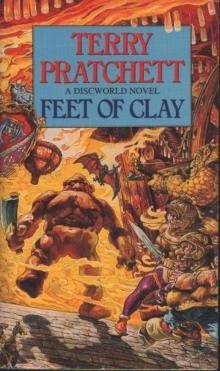 Feet of Clay
Feet of Clay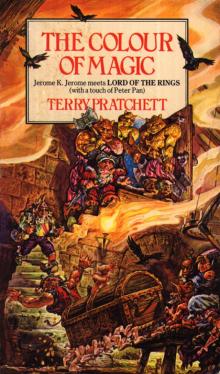 The Color of Magic
The Color of Magic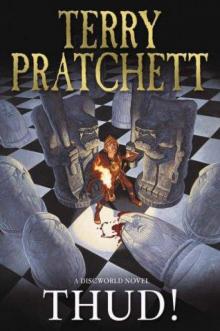 Thud!
Thud! Good Omens: The Nice and Accurate Prophecies of Agnes Nutter, Witch
Good Omens: The Nice and Accurate Prophecies of Agnes Nutter, Witch I Shall Wear Midnight
I Shall Wear Midnight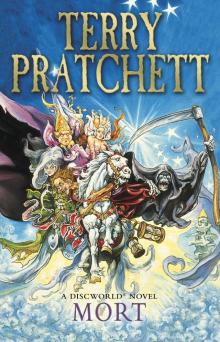 Mort
Mort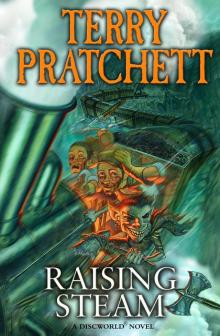 Raising Steam
Raising Steam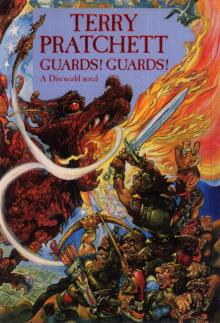 Guards! Guards!
Guards! Guards!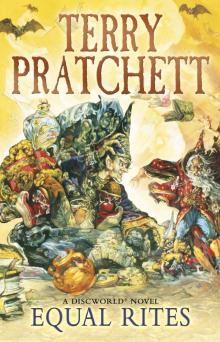 Equal Rites
Equal Rites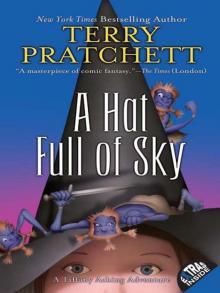 A Hat Full of Sky
A Hat Full of Sky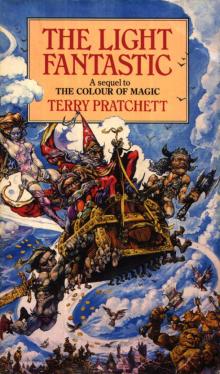 The Light Fantastic
The Light Fantastic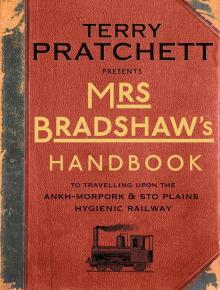 Mrs Bradshaw's Handbook
Mrs Bradshaw's Handbook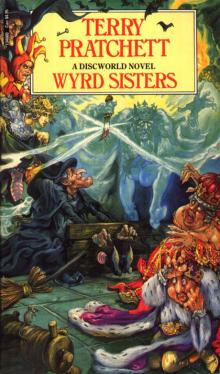 Wyrd Sisters
Wyrd Sisters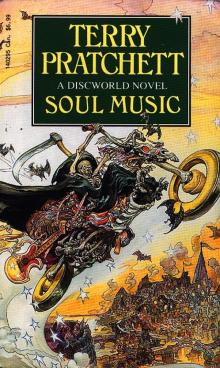 Soul Music
Soul Music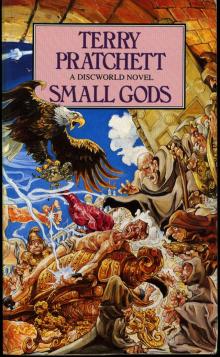 Small Gods
Small Gods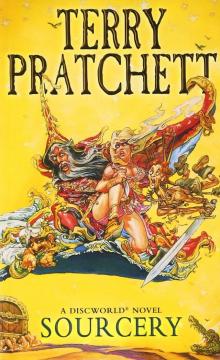 Sourcery
Sourcery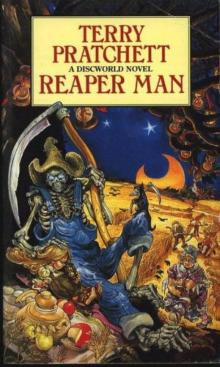 Reaper Man
Reaper Man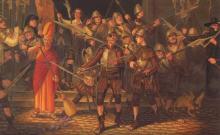 Night Watch
Night Watch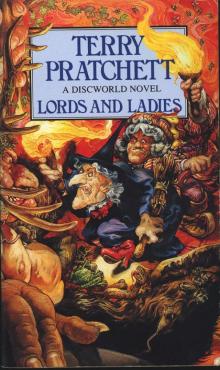 Lords and Ladies
Lords and Ladies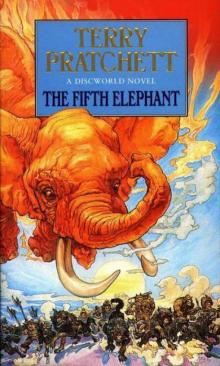 The Fifth Elephant
The Fifth Elephant Monstrous Regiment
Monstrous Regiment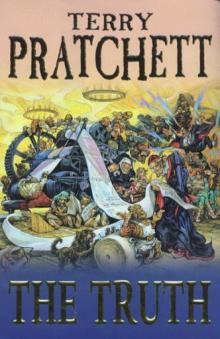 The Truth
The Truth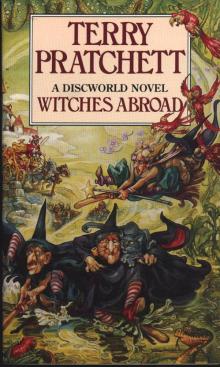 Witches Abroad
Witches Abroad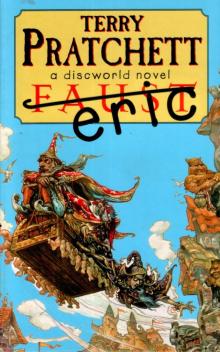 Eric
Eric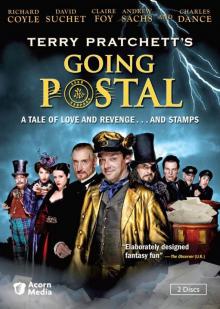 Going Postal
Going Postal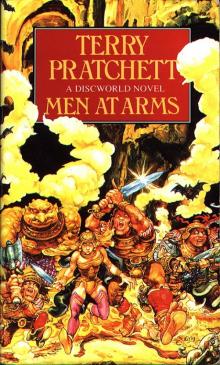 Men at Arms
Men at Arms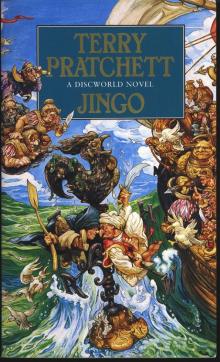 Jingo
Jingo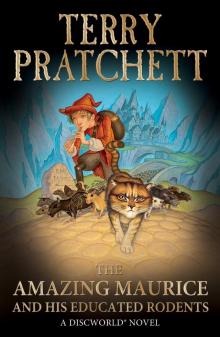 The Amazing Maurice and His Educated Rodents
The Amazing Maurice and His Educated Rodents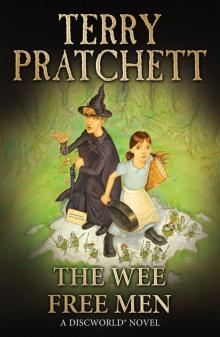 The Wee Free Men
The Wee Free Men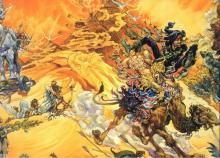 Pyramids
Pyramids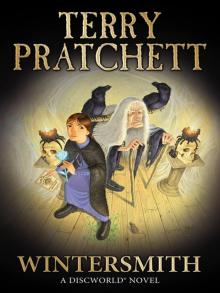 Wintersmith
Wintersmith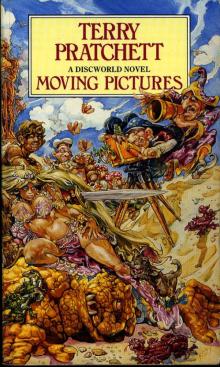 Moving Pictures
Moving Pictures Carpe Jugulum
Carpe Jugulum Interesting Times
Interesting Times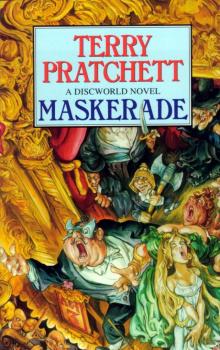 Maskerade
Maskerade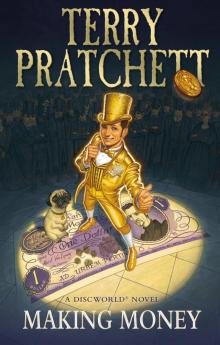 Making Money
Making Money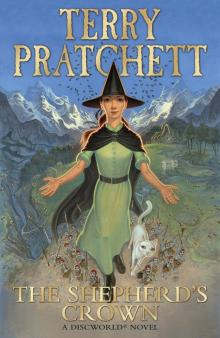 The Shepherd's Crown
The Shepherd's Crown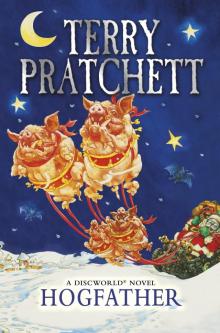 Hogfather
Hogfather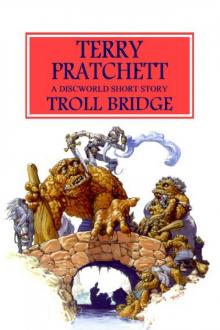 Troll Bridge
Troll Bridge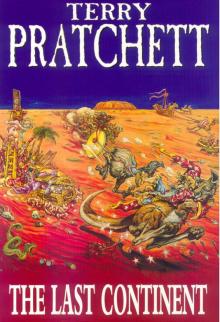 The Last Continent
The Last Continent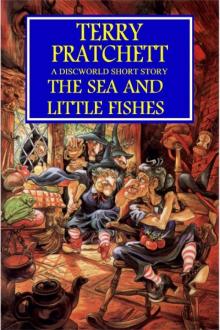 The Sea and Little Fishes
The Sea and Little Fishes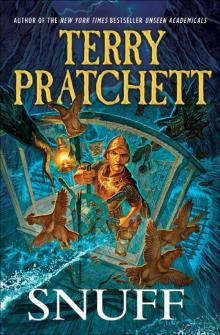 Snuff
Snuff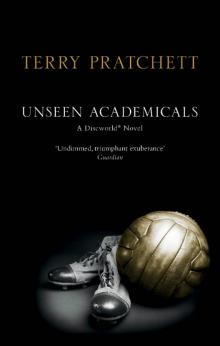 Unseen Academicals
Unseen Academicals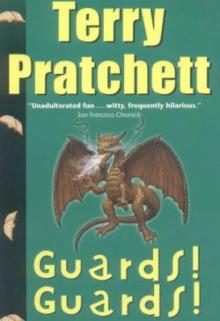 Guards! Guards! tds-8
Guards! Guards! tds-8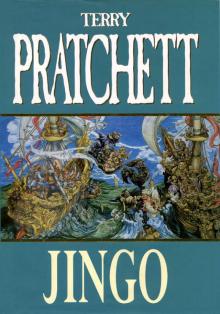 Jingo d-21
Jingo d-21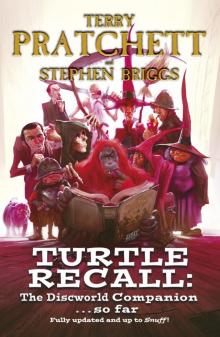 Turtle Recall: The Discworld Companion ... So Far
Turtle Recall: The Discworld Companion ... So Far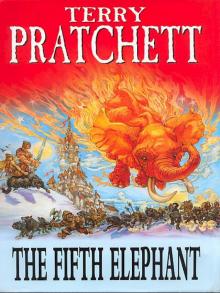 The Fifth Elephant d-24
The Fifth Elephant d-24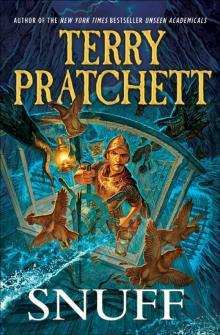 Discworld 39 - Snuff
Discworld 39 - Snuff The Long War
The Long War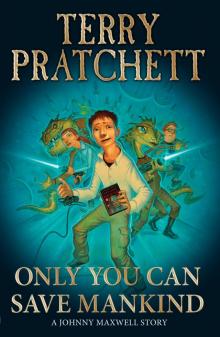 Only You Can Save Mankind
Only You Can Save Mankind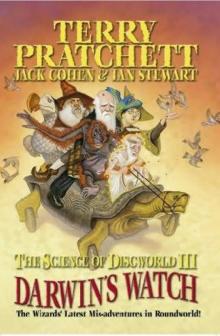 The Science of Discworld III - Darwin's Watch tsod-3
The Science of Discworld III - Darwin's Watch tsod-3 A Blink of the Screen: Collected Short Fiction
A Blink of the Screen: Collected Short Fiction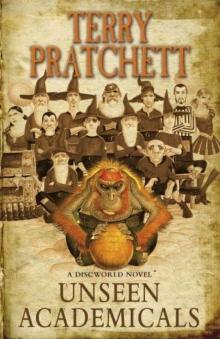 Unseen Academicals d-37
Unseen Academicals d-37 Wings
Wings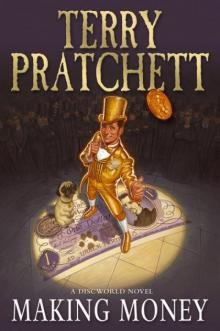 Making Money d-36
Making Money d-36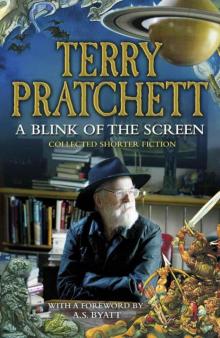 A Blink of the Screen
A Blink of the Screen Johnny and the Bomb
Johnny and the Bomb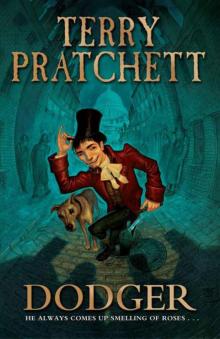 Dodger
Dodger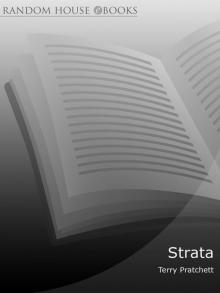 Strata
Strata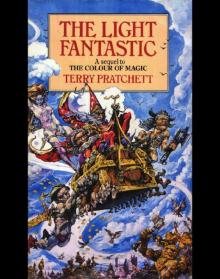 Discworld 02 - The Light Fantastic
Discworld 02 - The Light Fantastic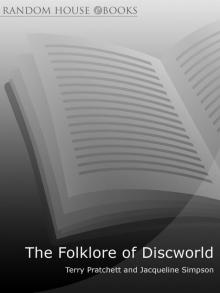 The Folklore of Discworld
The Folklore of Discworld The Science of Discworld
The Science of Discworld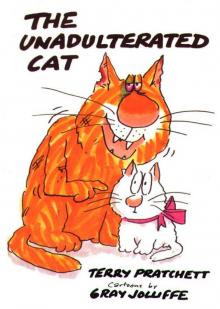 The Unadulterated Cat
The Unadulterated Cat Raising Steam: (Discworld novel 40) (Discworld Novels)
Raising Steam: (Discworld novel 40) (Discworld Novels)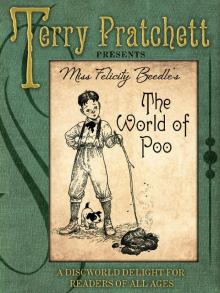 The World of Poo
The World of Poo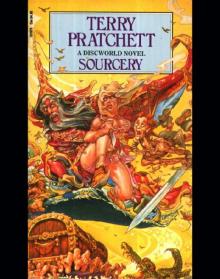 Discworld 05 - Sourcery
Discworld 05 - Sourcery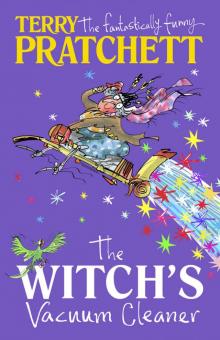 The Witch's Vacuum Cleaner: And Other Stories
The Witch's Vacuum Cleaner: And Other Stories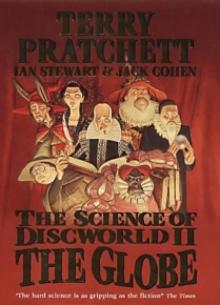 The Science of Discworld II - The Globe tsod-2
The Science of Discworld II - The Globe tsod-2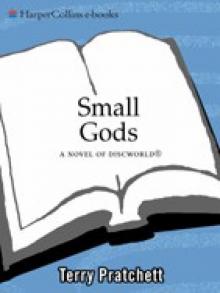 Small Gods: Discworld Novel, A
Small Gods: Discworld Novel, A Men at Arms tds-15
Men at Arms tds-15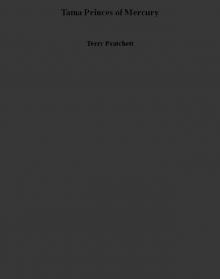 Tama Princes of Mercury
Tama Princes of Mercury The Last Hero (the discworld series)
The Last Hero (the discworld series)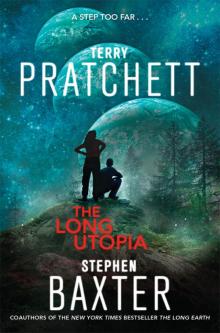 The Long Utopia
The Long Utopia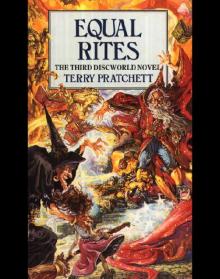 Discworld 03 - Equal Rites
Discworld 03 - Equal Rites Terry Pratchett - The Science of Discworld
Terry Pratchett - The Science of Discworld The Long Earth
The Long Earth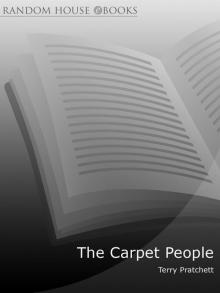 The Carpet People
The Carpet People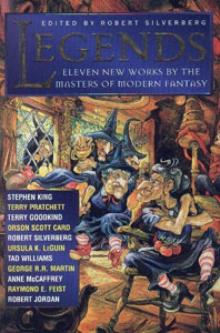 The Sea and Little Fishes (discworld)
The Sea and Little Fishes (discworld)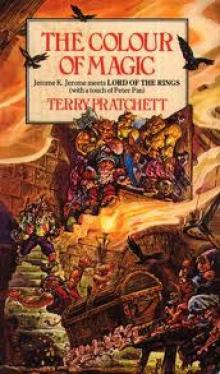 The Colour of Magic
The Colour of Magic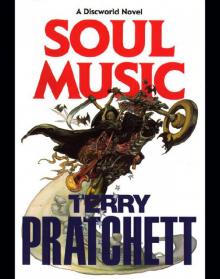 Discworld 16 - Soul Music
Discworld 16 - Soul Music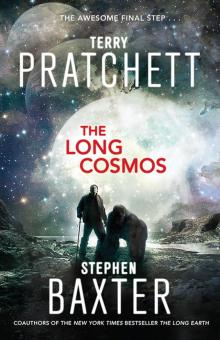 The Long Cosmos
The Long Cosmos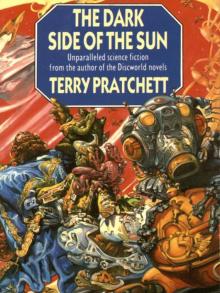 The Dark Side of the Sun
The Dark Side of the Sun Monstrous Regiment tds-28
Monstrous Regiment tds-28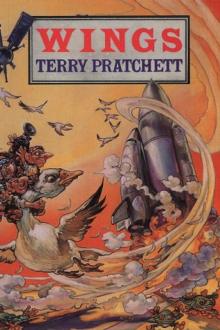 The Bromeliad 3 - Wings
The Bromeliad 3 - Wings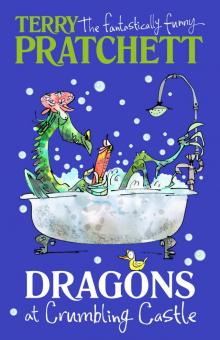 Dragons at Crumbling Castle: And Other Stories
Dragons at Crumbling Castle: And Other Stories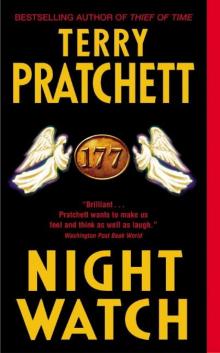 Night Watch tds-27
Night Watch tds-27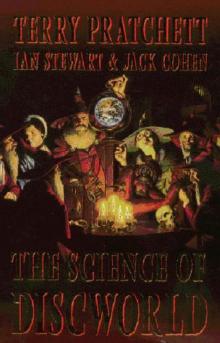 The Science of Discworld I tsod-1
The Science of Discworld I tsod-1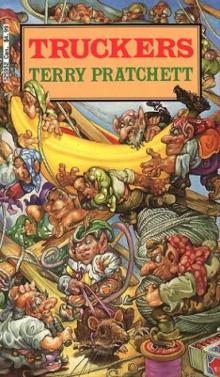 The Bromeliad 1 - Truckers
The Bromeliad 1 - Truckers The Science of Discworld Revised Edition
The Science of Discworld Revised Edition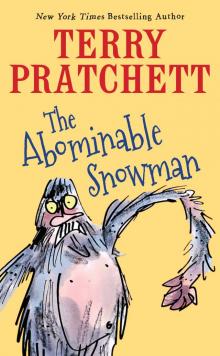 The Abominable Snowman
The Abominable Snowman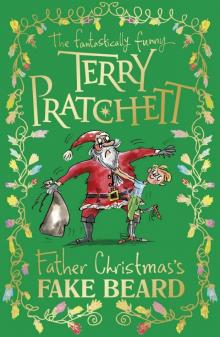 Father Christmas’s Fake Beard
Father Christmas’s Fake Beard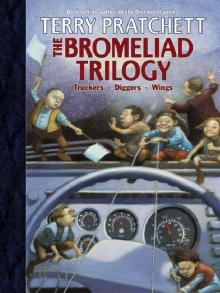 The Bromeliad Trilogy
The Bromeliad Trilogy A Slip of the Keyboard
A Slip of the Keyboard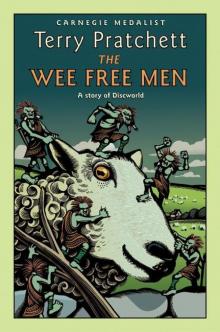 The Wee Free Men d(-2
The Wee Free Men d(-2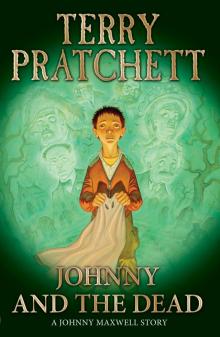 Johnny and the Dead
Johnny and the Dead Mrs Bradshaw's Handbook (Discworld Novels)
Mrs Bradshaw's Handbook (Discworld Novels)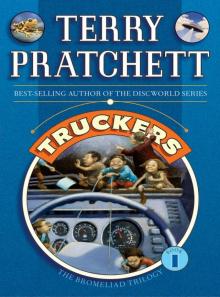 Truckers
Truckers The Amazing Maurice and His Educated Rodents d(-1
The Amazing Maurice and His Educated Rodents d(-1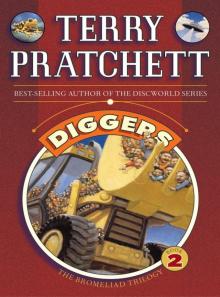 Diggers
Diggers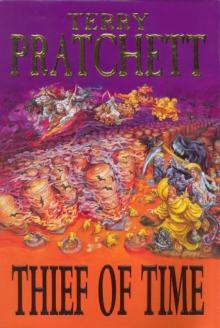 Thief of Time tds-26
Thief of Time tds-26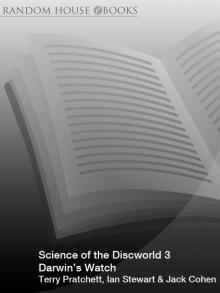 Science of Discworld III
Science of Discworld III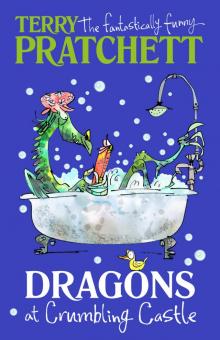 Dragons at Crumbling Castle
Dragons at Crumbling Castle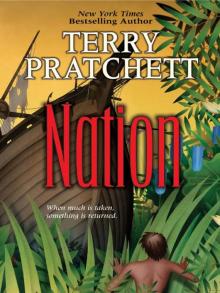 Nation
Nation Darwin's Watch
Darwin's Watch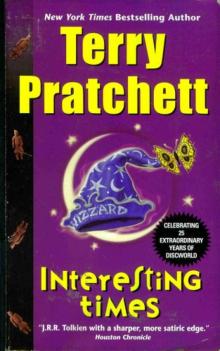 Interesting Times d-17
Interesting Times d-17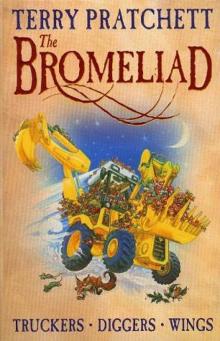 The Bromeliad 2 - Diggers
The Bromeliad 2 - Diggers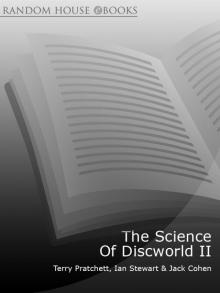 The Science of Discworld II
The Science of Discworld II